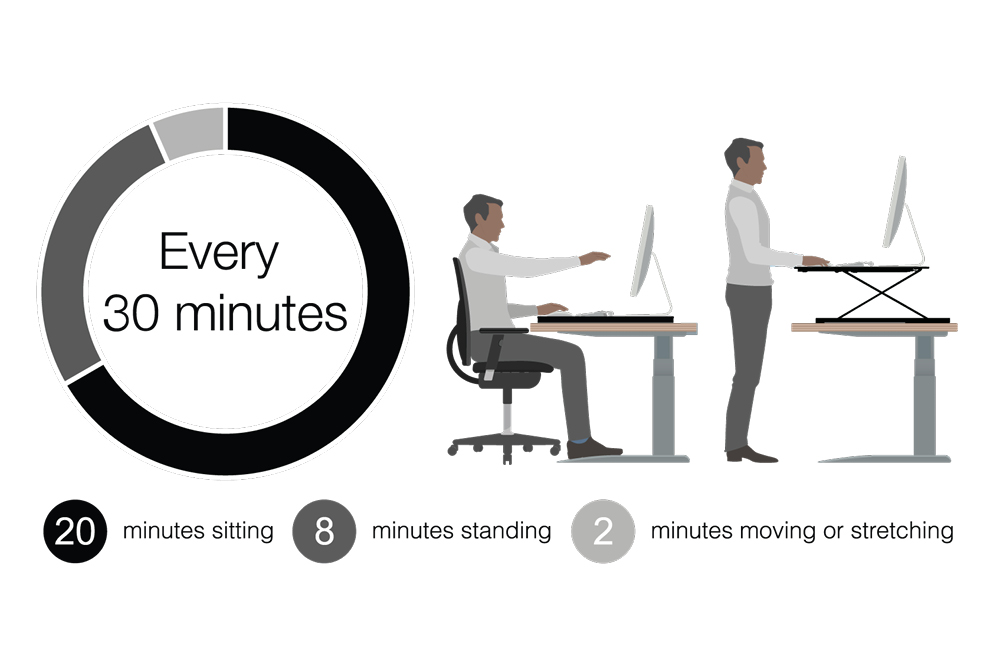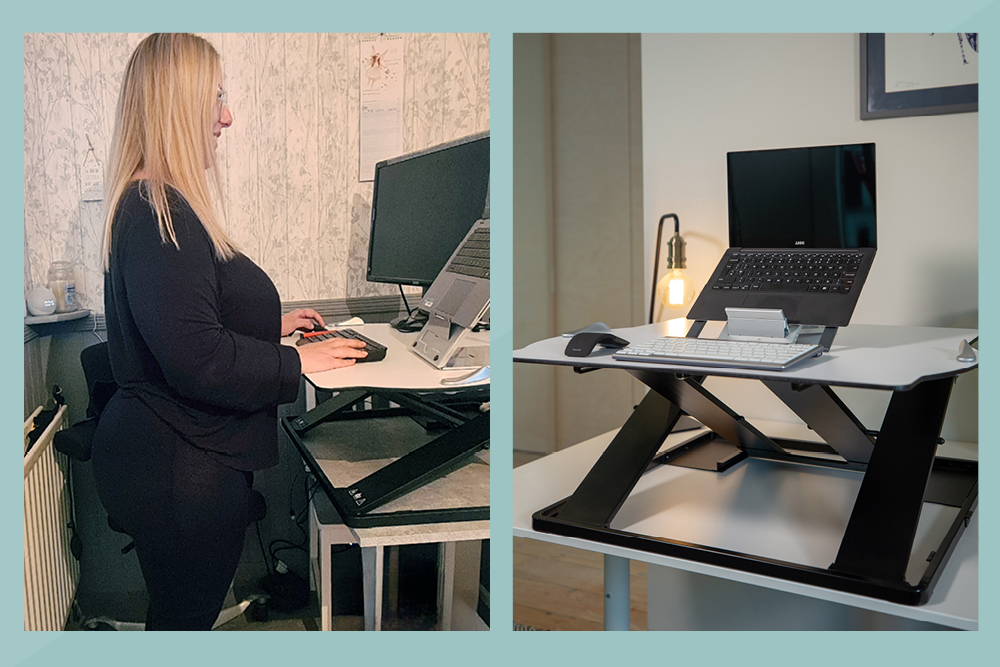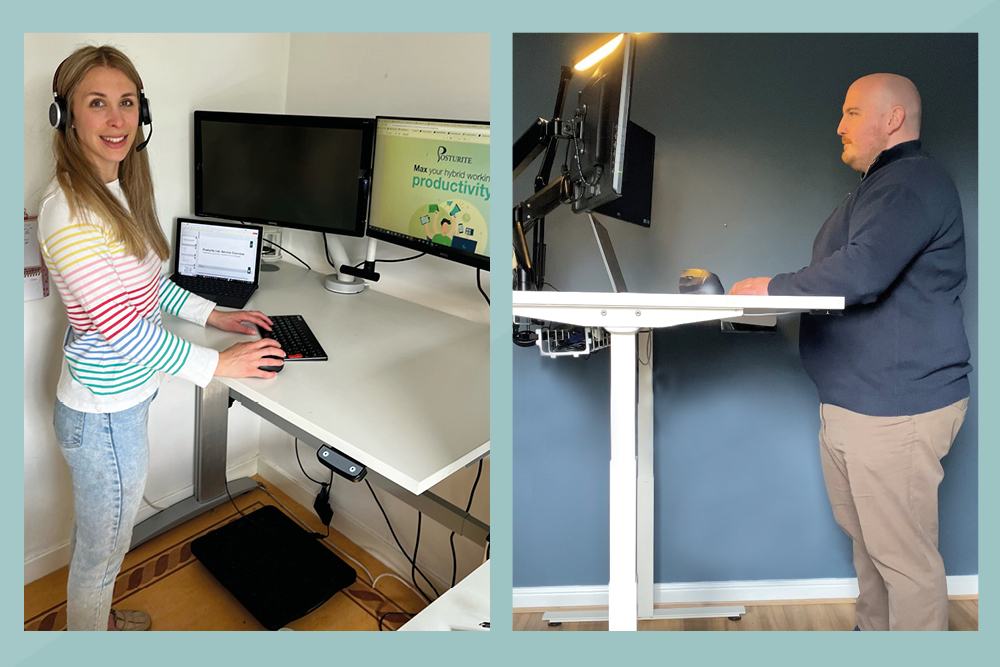
Our working from home habits are becoming second nature now. But what if some of these habits are bad for us? There’s still room for new ideas! Too much sitting is not good for our health. At home, how do you break up your working day? Do you move between sitting and standing and get active?
Tens of thousands of homeworkers do just that - in a bid to be less sedentary for better health and wellbeing. In this blog you’ll meet some of the UK homeworkers who stand up for periods throughout the day to work. They use their chair at times too – the whole concept is about changing working positions and that’s why Posturite call them ‘sit-stand desks’ rather than ‘standing desks’.
I asked these sit-stand fans about the benefits that this approach to active working brings them. They are Posturite staffers – so do have a vested interest in encouraging others to join the sit-stand party. HOWEVER, my persuasive powers do not extend to getting people to endorse products they do not believe in – so you can be sure these are real people who enjoy sit-stand working and would love to point others to this easy health hack.
And who doesn’t enjoy a peek through the keyhole into real people’s homes and home offices – without the magazine airbrushing and perfectly-placed Red Setter on a designer rug?
Sarah: “I stand for around 15 minutes to work, every couple of hours”
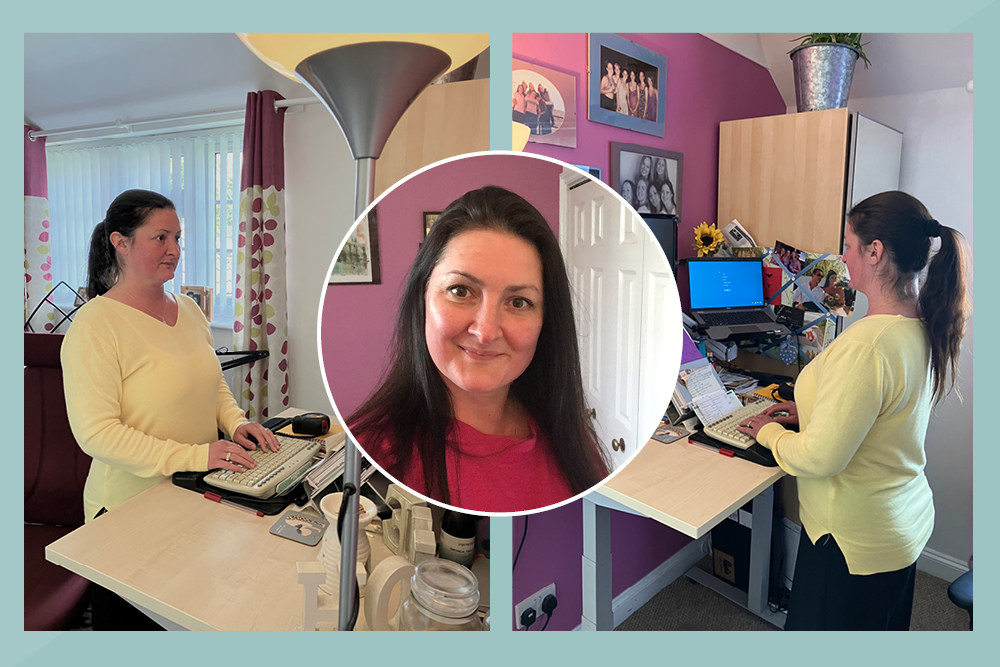
Sarah uses an electric sit-stand desk in the spare bedroom at home where she works. There’s a push button to easily move her desk and all the office equipment up for when she’s standing and then easily down again for sitting.
“I’m lucky enough not to spend all day, every day at my desk, however when I am here, I try to stand for around 15 minutes, every couple of hours, to stretch and move.
And I recently injured my back which made sitting uncomfortable, so at that point I was standing most of the time, which enabled me to keep working productively and recover much more rapidly.”
What’s the recommendation for a good amount of time to sit to work and a good amount of time to stand?
Everyone is different, but here’s some useful guidance developed by Cornell University in the USA:
Every 30 minutes, spend:
- 20 minutes sitting
- 8 minutes standing
- 2 minutes moving or stretching
In this way, you’re breaking your day into 30-minute chunks.
Dr Gavin Sandercock from the University of Essex advises that “You actually have to reduce sitting time by several hours each day to see noticeable improvements in health.”
Jodie: “I stand up to work when I’m not on a video call”
Jodie uses a sit-stand platform which she places on top of her dining table in her living room when working from home. It’s called an Opløft.
“The Opløft is a great option for my home environment. It allows me to create a sit-stand workstation at my dining table, with the ability to remove the platform if and when required.
I usually carry out my video calls sitting down and then stand up during my inputting and administrative work so that I can move my body as I’m not on camera. This routine allows me to break up the day naturally between sitting and standing without having to watch the clock to check if I have been sedentary for too long!”
How and when you use your sit-stand platform is a personal choice – as others do like to be standing during the Teams and Zoom calls – because standing gives them more confidence.
Danny: “It’s good to easily change my posture”
There’s a worry in the world of work that lots of working from home since Covid is making people even more sedentary than they were before. Danny (pictured below right) agrees, but has taken action to resolve this:
“I work predominantly from home which can have a negative impact on my ability to move easily through the day. Having my sit-stand desk allows me to easily change my posture and manage any discomfort.
I make a large amount of video calls in my job and often prefer to stand during these and then sit down for more admin-heavy tasks.”
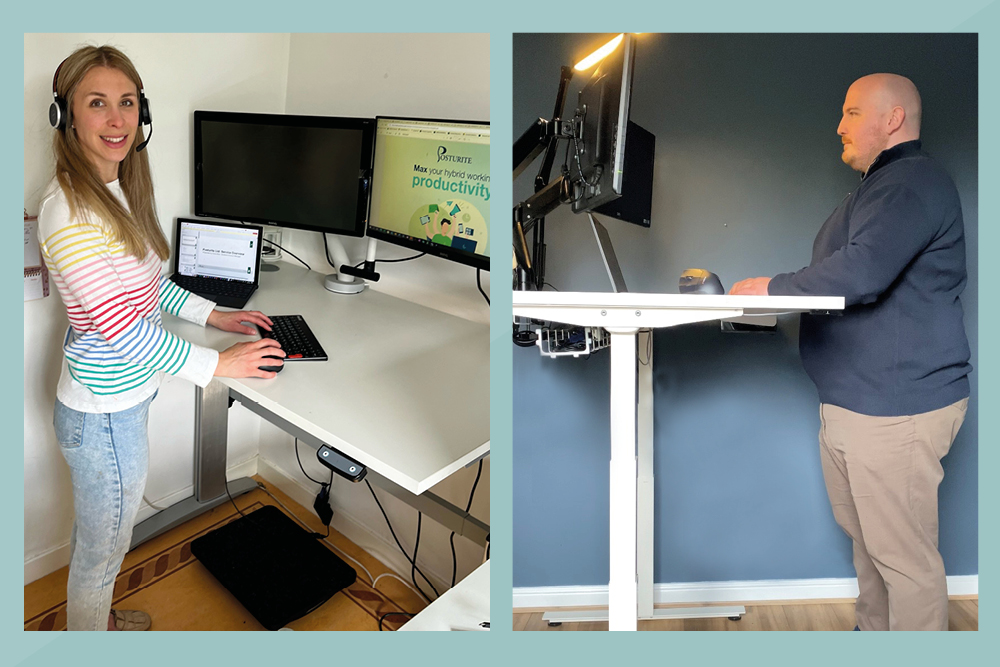
Fiona: “Standing helps me feel more focused and creative”
Fiona (pictured above) has had her height-adjustable desk for 7 years and finds that switching from sitting to standing has definitely maxed her productivity and energy levels during the day. Important as a parent of a baby! And was helpful to Fiona during her pregnancy too.
“A change in posture gives me a boost and helps create new ideas when I start to feel fatigued. I like to stand when I am typing for long periods because I feel more focused and creative on my tasks.
And most importantly, I used to experience numbing down the back of my legs – but this discomfort has now gone since I started standing during the day.”
Matt: “I tend to stand more in the afternoon”

Matt (above right) is another advocate of the Josho sit-stand desks which quietly raise up at the touch of a button.
“I definitely get a boost of concentration by alternating between sitting and standing.
I often look down at my notes and my keyboard to type, and find my setup comfortable both when I’m standing and when I’m seated.”
Jamie: “I don’t stay in any one position for too long!”
Also pictured above left is Jamie in his home workspace and I’m happy to include photographic evidence of the typical homeworking executive in shorts here!
“I find using the desk in standing position during Teams calls helps me stay more energetic and focused on the person I’m talking to. I tend to fidget a lot and using the desk at the mid-way point, using one of the Muvman stools, gives a nice variation. One thing I’ve always learned is not to stay in any one position for too long!”
Is too much sitting a problem for working people?
Research by the British Heart Foundation in 2012 found that the average Brit now spends 60% of their waking hours sitting down. I suspect that this may have increased since then, and await the data.
Sedentary behaviour has been shown to increase some health risks:
- Increased risk of cardiovascular diseases, obesity, diabetes, some cancers and premature death
- Prolonged poor postures leading to painful musculoskeletal disorders
So the World Health Organization recommends that adults should limit the amount of time spent being sedentary.
The sit-stand way of working is just one way to help us incorporate more physical activity into our everyday working lives.
Being more active while we carry out an ‘office’ job could help us feel more energised and help us perform better in our jobs too. The Professor of Human Brain Research at University College London found in his study that workers were twice as competent in their decision-making skills and made 45% fewer mistakes after using the Opløft sit-stand platform for a week.
University researchers have looked into how ‘standing desks’ affect wellbeing too. A 2022 University of Leicester investigation found that using height-adjustable desks to reduce sitting to work resulted in a small lessening of stress and improvement in wellbeing.
With UK Google searches for ‘standing desk’ increasing 1,566% since 2010, and 6,913 sit-stand platforms sold by Posturite in 2022 alone, you won’t be alone if you decide to join the merry band of sit-stand homeworkers in Britain.





